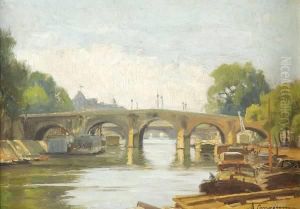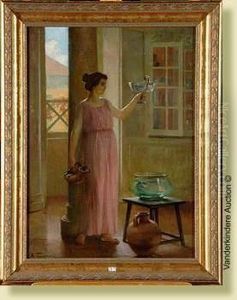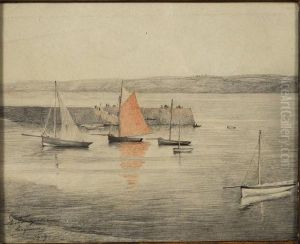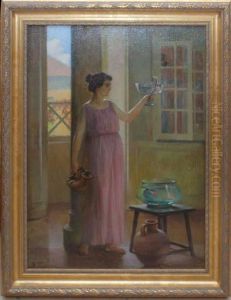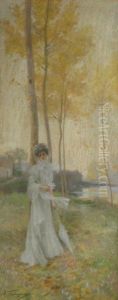Adolphe Faugeron Paintings
Adolphe Faugeron was a French painter born in 1866 in Paris. He was associated with the post-impressionist movement and was known for his landscapes, marine scenes, and still lifes. Faugeron studied at the École des Beaux-Arts in Paris under the guidance of Gustave Boulanger and Jules Lefebvre, two prominent academic painters of the time. His education at this prestigious institution provided him with a strong foundation in traditional painting techniques and academic style, which he later built upon in his personal artistic explorations.
Faugeron began exhibiting his work in the late 1880s and was a regular participant in the Salon des Artistes Français, where he received an honorable mention in 1891. Over the years, his style evolved, showing influences from the impressionist movement, as seen through his use of light and color. Faugeron's works often depicted the French countryside, coastal scenes of Brittany, and the urban landscapes of Paris. His paintings were characterized by a sense of tranquility and a harmonious palette, which reflected his interest in capturing the atmospheric moods of his subjects.
Despite being less well-known than some of his contemporaries, Faugeron made a significant contribution to the post-impressionist movement. His approach to painting was subtle and avoided the more radical techniques of some of his peers, which may have contributed to his lesser-known status in art history. Nevertheless, his works are appreciated for their quiet beauty and technical proficiency.
Adolphe Faugeron died in 1944, leaving behind a body of work that continues to be studied and appreciated by art historians and collectors. While not a leading figure in the post-impressionist movement, his art provides a valuable insight into the period and the ongoing evolution of French landscape painting at the turn of the 20th century.
